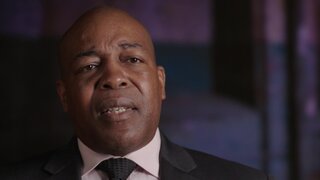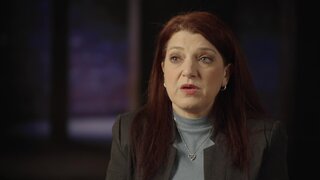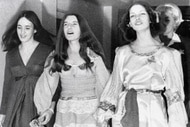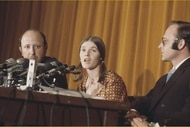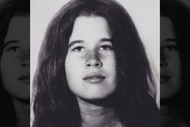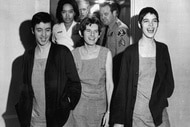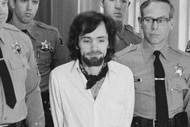Create a free profile to get unlimited access to exclusive videos, breaking news, sweepstakes, and more!
Cop's Intuition, Chipped Tooth Help Solve “Monumental Mystery” of Slain Queens Jogger
The strangulation murder of N.Y.C. speech pathologist, Karina Vetrano, haunted detectives, including New York Homicide's Robert K. Boyce.
The senseless murder of a woman jogging near her New York City home led investigators to several dead ends. But it was thanks to one detective’s hunch months later that the case — which once dominated the life of New York Homicide Host and former N.Y.P.D. Chief of Detectives, Robert K. Boyce — finally closed.
About a one-hour subway ride from Manhattan’s Midtown is Howard Beach in Queens, a quiet neighborhood of single-family homes and close-knit neighbors. On August 2, 2016, 30-year-old Karina Vetrano invited her father, Phil Vetrano, for a jog, though the father stayed behind on account of an aching back.
At around 5:00 p.m., Karina left for Spring Creek Park, a weeded nature preserve of about two square miles, blocks from the Vetrano home.
“I was concerned about Karina running alone in there because it’s isolated,” Mr. Vetrano told New York Homicide, airing Saturdays at 9/8c on Oxygen. “And I said to her, ‘I don’t think it’s a good idea,’ and she said, ‘Don’t worry, Daddy. I’ll be O.K.’”
Mr. Vetrano said he had a “bad feeling” when Karina failed to return around dinnertime, and subsequent calls to her cell phone went unanswered.
What happened to Karina Vetrano?
Phil Vetrano called a childhood friend who then worked for the N.Y.P.D. The friend sent a patrol car to the area, but when there was no sight of Karina, the search grew to include units from the 106th Precinct, combing the 10-foot-high reeds and searching into sundown.
“As we were searching the path and looking, you could feel the concern,” said N.Y.P.D. Detective Barry Brown. “Someone actually said out loud, ‘This doesn’t feel good.’”
Dogs and helicopters were part of the massive canvas. Citing “intuition,” Mr. Vetrano, a retired F.D.N.Y. employee, strayed off into the weeds. About 75 to 100 feet from the main trail, he found his daughter’s body.
“I picked her up; I let out a sound,” Mr. Vetrano told New York Homicide. “It’s the sound of true anguish.”
Detectives, including Brown and Lt. John Russo, found Karina’s face bruised and her front tooth chipped, leading them to believe she’d been punched. There was also evidence of a sexual assault.
A post-mortem examination revealed the victim died of strangulation.
No D.N.A. could be collected from the rape kit, though investigators created a profile from D.N.A. found underneath Karina’s fingernails and on her cell phone, which police discovered about 30 feet from the body.
Who was Karina Vetrano?
Karina Vetrano was “vivacious,” “successful,” and “everything you would want your child to be,” according to Mr. Vetrano. The four-foot, 11-inch tall Master’s Degree graduate still lived at home but was employed as a speech pathologist in Manhattan, working closely with disabled and autistic children.
According to friend Eryka Perreault, Karina was a “little firecracker” with a laugh that “echoed through rooms.”
“She was loved by so many,” Perreault told New York Homicide. “And now we all have a piece of us gone.”
When not working as a speech pathologist, Karina worked part-time as a club promoter in Astoria, Queens, inviting guests and earning a percentage of the money they spent on V.I.P. service.
An Investigation into Karina’s Family and Friends
N.Y.P.D. detectives hit the ground running to find out who would have brutally killed Karina. They hoped submitting the D.N.A. profile into local and national databases would help them close the case.
“But we got a no-hit, which put the investigation right back from the start,” according to Det. Brown.
“We didn’t really know what happened to Karina Vetrano,” Lt. Russo admitted.
Narrowing in on a timeline helped investigators find neighborhood surveillance cameras, which captured Karina running into Spring Creek Park moments before her attack. Footage showed no one trailing behind the victim, leading them to believe that the killer found Karina in the nature reserve.
As part of a thorough investigation, police looked into Mr. Vetrano, the last-known person to see Karina alive.
“I talked to Phil; he was a very concerned father,” said Det. Brown. “He blamed himself because he was supposed to be there.”
Karina’s parents were quickly cleared as suspects when the victim’s friends told investigators of a man named Paul. Paul was one of Karina’s coworkers at the nightclub and had reportedly made unwanted advances toward Karina. Friends claimed Paul grew aggressive and started stalking the victim when she rebuffed his advances.
Police, however, cleared Paul as a suspect after learning he was at work at the time of the murder.
News Coverage Helps a Witness Come Forward
With leads drying up, distraught loved ones held press conferences just one day after Karina’s funeral. The victim’s mother, Cathie Vetrano, angrily addressed the unidentified killer.
“I’m going to address whoever you are, soon we’re gonna have a face to the dick-less piece of garbage that you are,” Cathie told reporters. “I guarantee you, you m-th-erf-ck-r, that you will be reckoning with that force for the rest of eternity as you f-ck-ng burn in Hell.”
As news of the high-profile case circulated, a Verizon worker — working at Spring Creek Park on the day of Karina’s murder — contacted authorities. The witness claimed he saw a suspicious man wearing a wool cap, fitting the timeline police created. While nearby surveillance footage showed no such man, the Verizon worker helped police create a composite sketch, which the media released on Aug. 31, 2016.
RELATED: A Realtor to the Stars Is Found Bludgeoned to Death in Her Luxury NYC Penthouse
A former N.Y.P.D. Chief saw the sketch and called New York Homicide’s Robert K. Boyce. The caller, then the head of security for an apartment building in Brooklyn, said a tenant at his premises matched the description of the sketch.
Cops visited the apartment, and the man — identified only as Kevin — refused to answer the door. Police sat on the residence until he finally left.
Kevin admitted he resembled the composite police before investigators brought him to the precinct for questioning. There, Kevin refused to volunteer a D.N.A. sample.
“That immediately caught the room’s attention,” according to Det. Brown.
Police eventually scored a sample of Kevin’s D.N.A. from a discarded water bottle, but it did not match the profile connected with Karina’s crime scene. Cops were, once again, back to square one.
A Cop’s Intuition Leads to One Last Suspect
Months passed without any new leads until January 2017, when Lt. Russo — who also lived in Howard Beach — reexamined the case. He then had an epiphany, remembering an event in May 2016, just a few months before the murder.
“On the side of the street, one house over, I just see a person walking away from me,” Lt. Russo told New York Homicide. “He had a long-sleeved tracksuit on with a hoodie up over their head, even though it was 80 degrees. So, I said, ‘That’s odd.’”
Lt. Russo noted how this man seemed to be casing neighborhood homes, prompting him to call officers. But the stranger was gone when police arrived.
The next day, neighbors submitted complaints of similar suspicious activity of a man in a black and white tracksuit trespassing in yards. Russo soon spotted him and asked the man for his name, learning he was 19-year-old Chanel Lewis. The lieutenant believed "that was the end of it."
But, in January 2017, Russo had a gut feeling about the otherwise-unremarkable encounter. So, he did some research on Lewis, who had no criminal record but was served multiple summonses on the Brooklyn side of Spring Creek Park, opposite the Queens side of the reserve.
Chief Boyce, referring to the case as a “monumental mystery,” received a call from Russo.
“There was something in the sound of Lieutenant Russo’s voice that I had a feeling like this could be it,” said the New York Homicide Host. “We jumped right on it.”
Chanel Lewis emerges as a suspect
Detective Barry Brown thought looking into Chanel Lewis might be a long shot, but the investigation continued. Chanel was a recent high school graduate who lived with his mother and sister in East New York, a lesser-affluent Brooklyn neighborhood adjacent to Howard Beach, Queens. Both areas were connected by Spring Creek Park.
Lewis told officers that he was familiar with the area, explaining he was a loner with few friends and liked to walk around the trails to listen to music and clear his head. Cooperating with detectives, Lewis volunteered his D.N.A.
“We went to his high school, and we spoke with one of the teachers,” according to Det. Brown. “And the teacher advised us that [Lewis] had a troubled past with women, just the girls, in school.”
Brown said Lewis once asked a teacher, “Can I bring a knife to school tomorrow?” When asked why, Lewis claimed, “I want to kill all the girls,’” leading to his suspension from school.
RELATED: How a Retired Cop’s Murder Helped the NYPD Catch a Pair of Violent Spree Killers
Lewis’ father defended his son, but by doing so, he clued detectives into a crucial detail: He claimed Lewis couldn’t have committed the crime because he’d taken his son to the hospital one day after the murder. There, Lewis — claiming to have been in a fight — was treated for an injured hand.
After canvassing hospitals, detectives found the doctor who saw Lewis. The doctor said he removed a “foreign object” from Lewis’ hand, believed to be the missing piece of Karina Vetrano’s chipped tooth, according to Det. Brown.
On February 5, 2017, six months after Karina’s murder, Lewis confessed to the seemingly random attack. Lewis reported attacking the victim as she jogged in his direction, unleashing his rage due to an unrelated incident at home, as seen in a videotaped interrogation published by New York Homicide.
“And then, ‘cause of a past situation, I got angry,” Lewis told Queens County Assistant District Attorney Peter McCormick. “And then I’m hitting her and stuff like that.”
The D.N.A. results came back, proving Lewis attacked Karina in the park. Coupled with Lewis’ confession, police believed they had their guy.
The Two Murder Trials of Chanel Lewis
The murder trial began in November 2018, but to everyone’s surprise — despite what seemed to be a slam-dunk case — it ended with a hung jury, with seven jurors in favor of conviction and five in favor of an acquittal. The judge had no choice but to declare a mistrial.
“Disbelief,” Phil Vetrano told New York Homicide of his reaction. “How could anybody not come to the conclusion that this person did this, murdered my daughter, is beyond me.”
In April 2019, a retrial took place. This time, prosecutors came with new evidence, showing the court a detailed list of Lewis’ online search history prior to his arrest. Such inquiries included information about indictments, plea bargains, prosecution, and news surrounding Karina’s murder.
This time, Lewis was found guilty of murder and sentenced to life behind bars without the possibility of parole.
“Karina talks to me every day,” Mr. Vetrano maintained. “I picture my baby. I picture her in life, and I picture her in Heaven, and she is extremely powerful.”
Watch more of New York Homicide as Season 2 continues, airing Saturdays at 9/8c on Oxygen.


